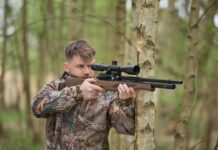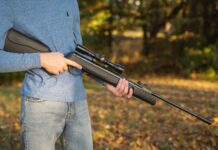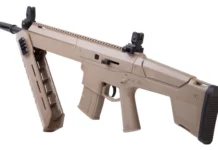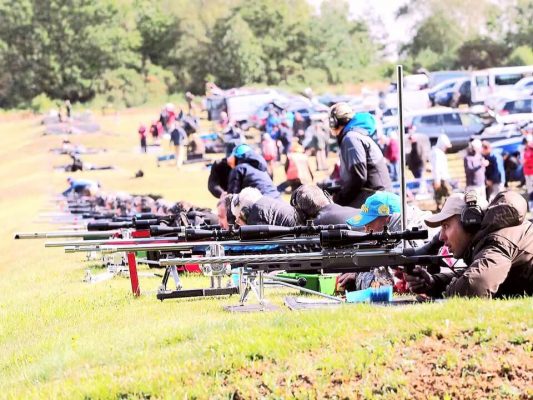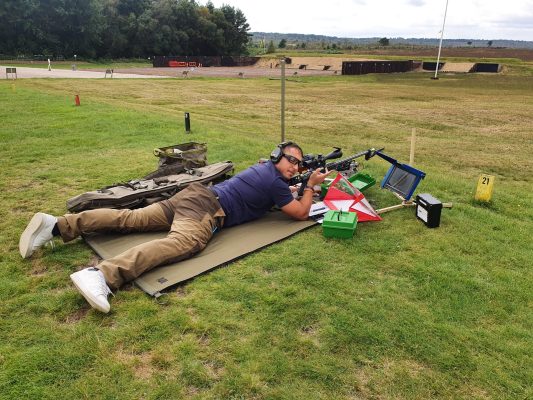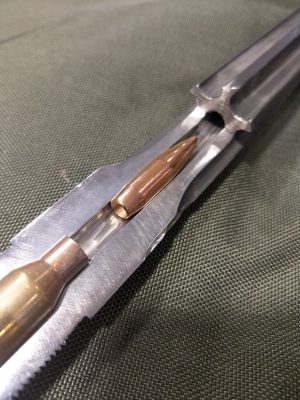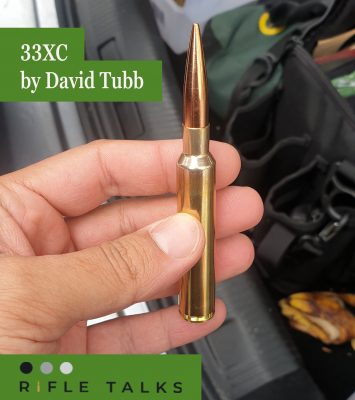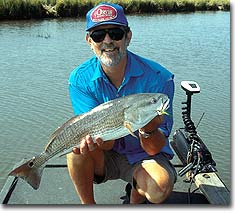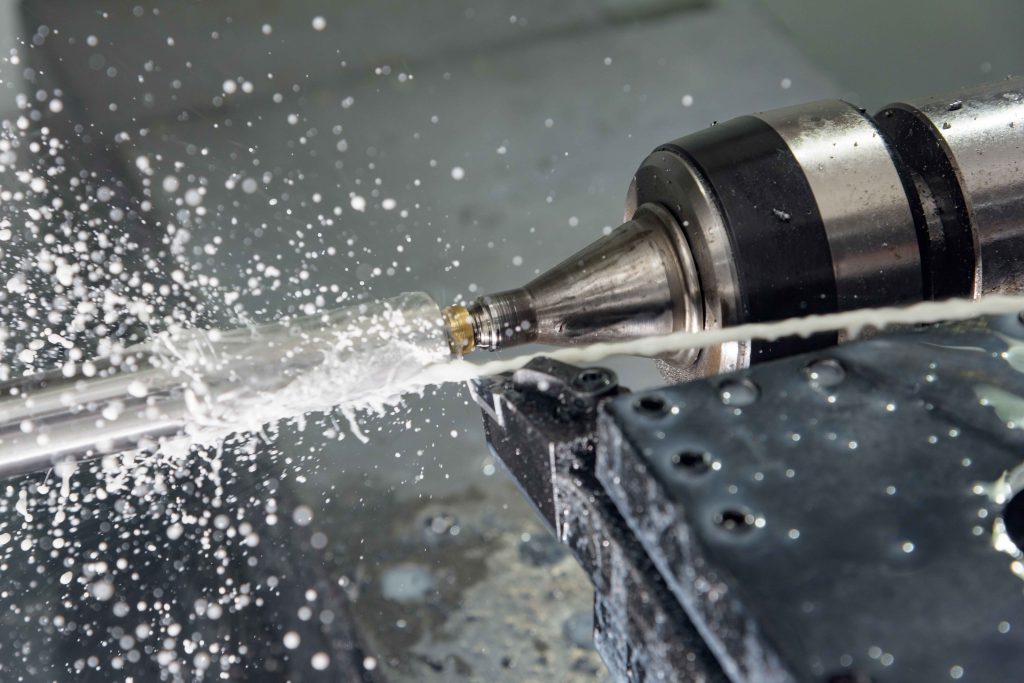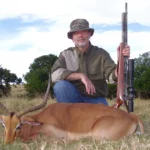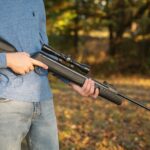Table of Contents
- What we’ve done to judge the fastest crossbow in 2024
- What are the advantages of a fast crossbow?
- What are the disadvantages of a fast crossbow?
- Difference between kinetic energy (KE) and speed (FPS)
- One Commonality between these crossbows
- The Fastest Crossbow Reviews
- Ravin R500 Vs TenPoint Nitro 505
- Fastest Crossbow in the World/Fastest TenPoint Crossbow: The Nitro 505
- Fastest Ravin Crossbow: R500
- Scorpyd Nemesis Review 480 FPS
- TenPoint Nitro XRT Review 470 FPS
- Fastest Scorpyd Crossbow: Aculeus Review 460 FPS
- Fastest Recurve Crossbow: Excalibur Bulldog Review 440 FPS
- Most Accurate: Ravin R29 Review 430 FPS
- Fastest Barnett Crossbow: Hypertac Pro 430
- Fastest Crossbow for the Money/Youth: Centerpoint Wrath 430
- Conclusion – the fastest crossbow
What we’ve done to judge the fastest crossbow in 2024
The fastest crossbow in 2024 is the TenPoint Nitro 505.
My recommendation, however is the Ravin R500 or the R29.
Read on to find out why.
For each crossbow’s FPS (feet-per-second), we sourced information from manufacturers and tests, and are confident it’s the most up-to-date at the time of the review.
Remember that any 400 fps crossbow is already electric, so these crossbows are taking it to another level.
In this article, we’ll be reviewing the following crossbows:
- Fastest Crossbow on the market: TenPoint Nitro 505: 505 FPS
- Fastest Ravin Crossbow: R500: 500 FPS
- Scorpyd Nemesis: 480 FPS
- TenPoint Nitro XRT: 470 FPS
- Fastest Scorpyd Crossbow: Aculeus: 460 FPS
- Fastest Recurve Crossbow: Excalibur Bulldog: 440 FPS
- Most Accurate Fastest Crossbow: Ravin R29: 430 FPS
- Fastest Barnett Crossbow: Hypertac Pro 430: 430 FPS
- Fastest Crossbow for the Money/Youth: CenterPoint Wrath 430: 430 FPS
Before we review the fastest crossbows, let’s go over:
- the advantages of speed
- the disadvantages of speed
- the difference between power and speed
- one commonality between the crossbows
What are the advantages of a fast crossbow?
Longer range & better accuracy
The distinct advantage to a faster bow is that it creates a flatter trajectory. This improves aim over distance, not having to account for as much drop in the arc of the arrow.
What’s most impressive about performance improvements on the fastest crossbows over the last five years is how much it impacts accuracy over longer distance.
For example, the R500 and the TenPoint Nitro only drop about one inch over 40 yards compared to 20 yards, significantly more than less powerful crossbows.
Less chance of “jumping the string”
Not an uncommon phenomenon when hunting at longer ranges, the snap of the bow string upon firing is enough to startle game into a panic-driven movement reflex which, by the time the bolt arrives, may mean you hit the wrong part of the animal or miss it completely.
An extremely fast bow makes it less likely because, at 500+ FPS, a deer just won’t have enough time to react even at 60-80 yards.
What are the disadvantages of a fast crossbow?
Noise
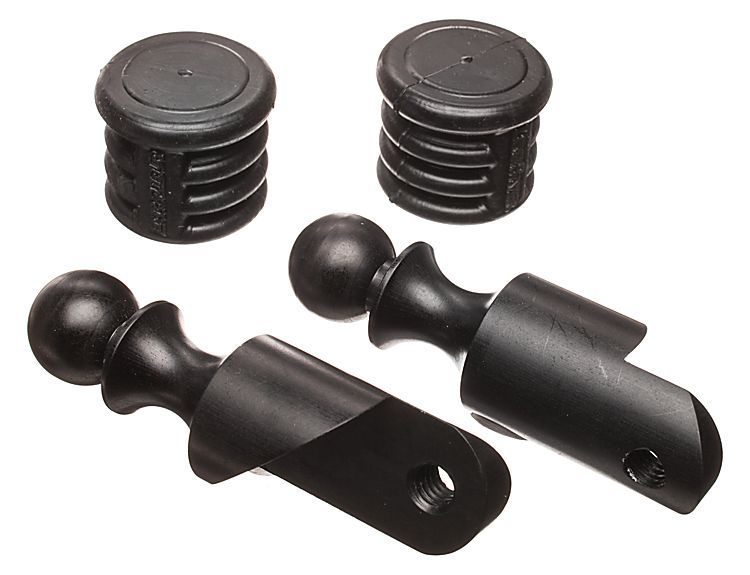
It seems logical that if you wind a string up further and harder before letting it go, that this cause more vibrations, and therefore make more noise.
This is somewhat mitigated in the case of compound crossbows, as their pulley systems allow the energy to be stored in other parts instead of the string, thus reducing vibration.
On recurve bows – as mentioned later in the Excalibur Bulldog 440 review – vibration is amplified at high FPS, making purchasing a full suppression system worth considering.
- Read more: Best crossbows on the market
- Read more: Best crossbow for under $500
- Read more: Best Women’s Crossbows
Equipment wear
When you build so much power into a crossbow, you are asking the limbs to store more energy when cocked. This will result in the possibility of broken limbs on the one hand, as well as having to restring your crossbow more often.
Not only this, but high speeds wear down the arrows – in fact, you’ll probably have to use manufacturer-specific equipment.
Accessories made for lesser bows are often incompatible, so you may see yourself tied to the manufacturer.
External Influence
Extreme speeds will magnify all of the variables in every shot. You’ll find yourself battling the wind, gravity and operator shakiness in different ways.
You’ll also find that some arrows which shoot fine at lower speeds can’t handle the added pressure of flying at 450-500 FPS – it’s fast!
Difference between kinetic energy (KE) and speed (FPS)
It appears that most hunters thirst for speed in their crossbow. This does makes sense, as more speed means more distance, better accuracy, and less chance for the animal to escape.
On the other hand, it raises questions of ethics as higher speeds at a more considerable distance may make you miss your target (or the intended part of the animal).
What’s more, when you increase speed, you often do so by reducing the mass of the arrow and therefore reducing the energy.
The following analogy may help to understand; first of all, imagine getting hit by a grain of sand at 100mph. Frustrating indeed, but nothing to write home about. Then imagine getting hit by a brick at 20mph. With the latter, you risk death.
The point is, when targeting speed, we should also target increased KE, to take down bigger animals you’re proud to take home.
One Commonality between these crossbows
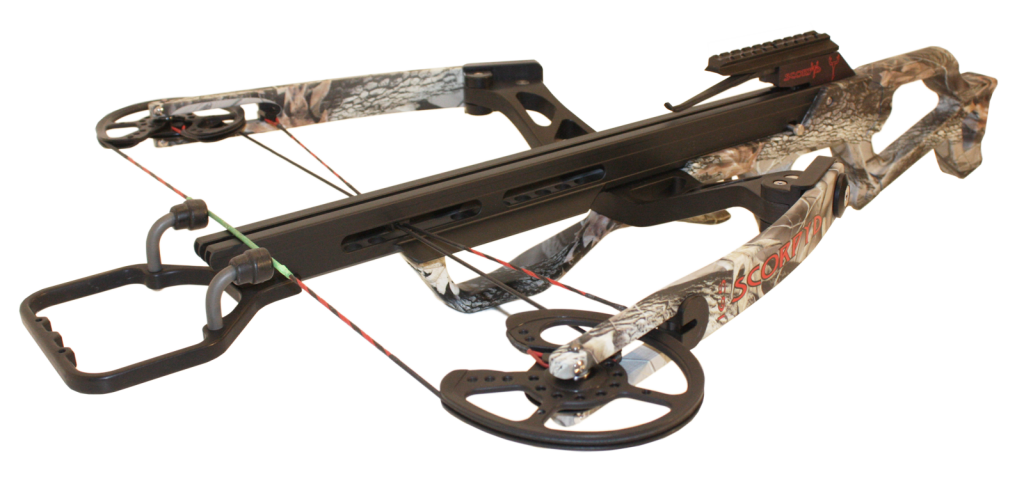
Almost all of the bows have one thing in common: reverse-draw technology. Reverse-draw technology essentially means that you are drawing towards the riser – the aluminium connecting limb to bow – instead of away from it.
A lot of the crossbow companies pay royalties to Kempf – the designer – to use his patent, as there seems no better way (for now) to get more output from a crossbow.
Improved crossbow balance
The most powerful crossbows generally require longer power strokes, to generate more force.
This usually would create a more substantial weight imbalance toward the front of the crossbow.
Reverse draw technology shifts the risers from the front of the crossbow to its center, to provide excellent balance and reduce front-heavy crossbows.
Exceptional accuracy
The centrally positioned risers mean that the crossbow doesn’t feel as heavy, and you can both hold your aim for longer, or quickly react to unpredictable situations.
Heavily reduced noise
The fact the string pulls through these risers effectively elongates the power stroke, while reducing the draw weight. Aside from generating higher speeds, it also results in significantly less vibration, meaning shots 3x quieter.
Better trigger experience
If you don’t have as much draw weight, the trigger isn’t going to be as strained, and this results in a better, all-round shooting experience.
The Fastest Crossbow Reviews
Ravin R500 Vs TenPoint Nitro 505
Firstly, take a moment to recognize that in 2019 we had just broken the 400 FPS barrier with the TenPoint Nitro XRT 432 (Cabela’s/Amazon). Within a year, the XRT was flying at 470 FPS. Now in 2024, we have two 500+FPS crossbows. An incredible performance leap in just four years.
Secondly – and read this carefully – these crossbows offer more penetration over 50 yards than a compound bow at point blank!
Do I buy the R500 or the Nitro 505?
If you’re looking for purely the fastest, the Nitro 505 is the fastest crossbow in the world, flying ten feet per second faster than the R500. However, the R500 is a more consistent crossbow when tested with field points, multiple broadheads, and from multiple positions. The R500 experienced ‘flyers’ less regularly and not nearly as wildly as the Nitro 505.
A few poor review comments on the TenPoint website support this, claiming poor grouping and quality control before shipping.
Safety
The R500 also feels like a safer bow thanks to its design – a shroud that covers the string.
Pricing
Pricing is always important. When both crossbows came out, you had to spend upwards of $3000. Check Amazon (R500 / Nitro 505) or Cabela’s (R500 / Nitro 505) for the latest prices.
Performance
Crossbow performance, as mentioned, is improving dramatically year on year. However, the R500 and the Nitro 505 are certainly not the most accurate crossbows we’ve tested. Supporting (yet necessary) accessories, such as bolts, fletchings, broadheads, etc., are not keeping pace. In the next couple of years, this may be where crossbow brands try to make gains, making these bows as reliable as they are powerful.
Fastest Crossbow in the World/Fastest TenPoint Crossbow: The Nitro 505
Weight: 7.9 lbs Length: 30.5 inches Width (cocked): 6.5 inches Width (uncocked): 12 inches Draw Weight: 300 lbs Power Stroke: 17 inches Speed: 515 FPS
When you first look at it, it follows the typical TenPoint design, with its ACUslide cocker, reverse-draw technology, and some slightly beefed-up limbs. The knocks on the bolts are also a little beefier. You can use these new knocks on old TenPoints, but you can’t use older versions on the new Nitro 505 because the bolts are designed to perform (or not break!) at extreme speeds.
The ACUslide cranking mechanism feels wonderfully safe. It takes all the weight out of the action and will not unwind on you halfway through. It also decocks so safely that your children can perform the entire process. In comparison, this was a better experience than the original Ravin until Ravin included the automatic e-cocking mechanism, which is another technological leap forwards. The Nitro’s finger shield protects you comfortably from the string.
Although not on par with the crossbow for quality, the package scope has been built by Hawke and is a marked improvement on the typical standard scopes they include.
The S1 trigger is a two-stage zero-creep trigger with a crisp break on the shot at four pounds in testing.
The Nitro 505 was also a little louder than some other bows, but it’s understandable with the power and vibration it generates.
Fastest Ravin Crossbow: R500
Weight: 8.4 lbs Length: 28 inches Width (cocked): 3.6 inches Width (uncocked): 7.6 inches Draw Weight: 300 lbs Power Stroke: 15 inches Speed: 505 FPS
Ravin has developed and introduced a Hex Coil system mounted to a reverse-draw system to reach eye-watering speeds and make their crossbow the best for portability and maneuverability. Uncocked, it’s 7.7 inches, and when cocked, it sits at a streamline of 3.6 inches. With a weight of 8.4 pounds and a length of 28 inches, you never feel hampered by trees and branches and will often find creative ways to aim from cover.
Cocking a crossbow has become painless and automatic. The crossbow has a VersaDrive cocking system with an integral screw drive that has allowed the Ravin team to include an electronic cocking option on a later release without the need for a cocking crank. If this is for you, ensure the version you buy includes it.
I like this design’s safety because the crank is housed in a shroud that protects your fingers and body from accidents around the string.
This crossbow is capable of deadly accuracy of well over 100 yards (although we don’t recommend this for hunting). I loved seeing it tested with the Garmin X1i Crossbow Scope to see what’s possible when the best crossbow and scope technology meets.
This scope isn’t included in a standard package, though! You’ll get a fully-assembled crossbow, six bolts with field points, a removable draw handle, a quiver, and an illuminated speed-compensating scope. I feel that some of these add-ons are a little cheaper than the crossbow itself, which is a shame for such an expensive purchase.
Understandably, the bolts are tailored to the extreme power of the R500; your warranty will be voided if you use any others.
Scorpyd Nemesis Review 480 FPS
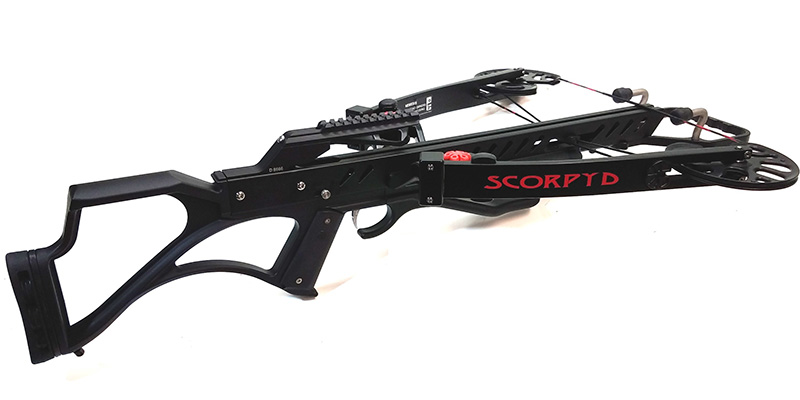
Weight: 7 lbs Length: Unknown Width (cocked): 8.9 inches Draw Weight: Unknown Power Stroke: Unknown
Scorpyd, sadly, decided to recall the Nemesis due to serving wear issues.It’s a shame as the Nemesis flew at a whopping 480 FPS.
The 480 FPS rating was taken with a 400-grain arrow. There are reports of a massive 505 FPS achieved with the 375-grain bolt; which would be the first time a crossbow broke the 500-FPS barrier back in 2019. Was this a 500-FPS crossbow?
At 480 FPS, this crossbow generated a whopping 189.2 FPKE.
Scorpyd knows how to make fast crossbows, and seem to prioritise it over anything else.
That’s not to say though that the bow didn’t have balance, precision and versatility, thanks to its reverse-draw technology and patented SearLoc Trigger System.
Special Mentions
- Possibly the first ever 500+ FPS crossbow back in 2019
TenPoint Nitro XRT Review 470 FPS
Weight: 7.4 lbs Length: 30.7 inches Width (cocked): 7 inches Draw Weight: 225 lbs Power Stroke: 16.5 inches
TenPoint Nitro XRT is one of our favourite crossbows ever. It doesn’t just appear in our review of the fastest crossbows, but in our review of best crossbows, too.
It’s an all-round monster weapon, which hits a crazy 470 FPS, generating more than 185 FPKE.
It has a silent draw system, and an improved trigger with a string-latch design (although we still felt there was room for improvement). It is also comfortable to shoulder for those long days hunting.
It’s excellent weight-distribution with the reverse-draw technology make it a piece of cake to handle and aim. Perhaps the only thing stopping this crossbow being our favourite ever is the expensive price tag.
Fastest Scorpyd Crossbow: Aculeus Review 460 FPS
Weight: 7.5 lbs Length: 34.5 inches Width (cocked): 12.875 inches Draw Weight: 180 lbs Power Stroke: 18.5 inches
The Aculeus remains in the top three for speed, and will undoubtedly be available at a discount rate from the new Scorpyd Nemesis. This could work in its favor, given that these crossbow prices range into the thousands.
Fastest Recurve Crossbow: Excalibur Bulldog Review 440 FPS
Weight: 6.2s lbs Length: 35.75 inches Width (cocked): 23 inches Draw Weight: 300 lbs Power Stroke: 14.5 inches
What’s more, you can enjoy all the typical advantages of a recurve bow, in maintenance and crossbow weight.
We wonder, however, just how long those limbs are going to last on a cocked crossbow 23 inches wide and with a 14.5-inch power stroke.
Another issue is noise. Perhaps you want to try heavier bolts or purchase a full suppression system? This, of course, will take away a little from the 440 FPS – your call!
Can a deer get out of the way anyway if a bolt is travelling 440 FPS? Maybe not, but ethical hunting is important. If you hit the wrong part of the animal, it could end up hurt, or taking longer to die than is necessary.
Special Mentions
- The Fastest Recurve Crossbow
Most Accurate: Ravin R29 Review 430 FPS
Weight: 6.75 lbs Length: 29 inches Width (cocked): 5.75 inches Draw Weight: 240 lbs Power Stroke: 12.5 inches
That’s because they didn’t achieve 430 FPS by compromising other aspects needed for crossbow hunting.
The Ravin R29 sits in at an incredible 5.5 inches shorter than the R20, at 29 inches in length, with a more than reasonable 12.5-inch power stroke to deliver a punishing 164 lbs of kinetic energy.
It has incredible six-inch cocked full width and weighs only 6.75 lbs. This makes it our favourite fast gun for a long day hunting. You can shoulder this crossbow all day, and instantly react to surprises. Wow!
If you’re happy to compromise down to 400 FPS (I mean, come on, it’s not exactly slow…), check out the Ravin R26. This won our best crossbow; with sleeker dimensions and all-round perfection.
Special Mentions
- The Most Accurate Fastest Crossbow
Fastest Barnett Crossbow: Hypertac Pro 430
Weight: 8.9 lbs Length: 31 inches Width (cocked): 9.125 inches Width (uncocked): 13 inches Draw Weight: 230 lbs Power Stroke: 14.25 inches Speed: 430 FPS
With the scope, it showed impressive, tight grouping with field tips over 60-70 yards. Although not pre-installed, I also liked how straightforward it was to set up.
The bow is fairly noiseless thanks to the unique cam design on the inside of the limbs, which reduces vibration (which produces noise).
Its unique integrated string hook system functions well with the TriggerTech Zero Creep trigger, which fires at exactly three pounds. TriggerTech is Barnett’s proprietary technology that drops a free-floating roller between the sear and trigger, making the shot crisp and smooth. It’s better visualized than described:
The Hypertac 430 has a custom feel to it. The buttstock and cheekpiece have micro-adjustment options to set the perfect length of pull. The forend has an optional flip-down Verti-Grip to shoot the crossbow like an assault rifle.
The bow has a cocking crank integrated, which allows you to both cock and decock safely. If you release the crank before it’s cocked, it will not dangerously unload. On the negative side, the crank was unexpectedly loud, as was the removal of the safety.
The package bow comes fully assembled with three 22-inch Hyperflite arrows, a 1.5-5×32 illuminated speed-compensating scope, an integrated cocking crank, a side-mount quiver, and rail lube.
Also, a special mention for the proprietary (and therefore not the easiest to get hold of) Hyperflite bolts. Despite being a little expensive, they have a high-quality feel with a slimmer 204 diameter, 1000 straightness, stiff spine with 60 grains upfront to increase your FOC by 25%, increasing penetration by 30% over a standard crossbow bolt.
Fastest Crossbow for the Money/Youth: Centerpoint Wrath 430
Weight: 8.3 lbs Length: 28.26 inches Width (cocked): 9 inches Width (uncocked): 13 inches Draw Weight: 200 lbs Power Stroke: 15 inches Speed: 430 FPS
For this reason, I love to recommend the Wrath as the best crossbow for women or youth. Its short length (28,26 inches) and nine-inch Width, when cocked, are the best you will find on a bow two or three times less expensive than most on this list.
The Wrath is attractively priced for beginner hunters at less than $1000. You get a high-quality crossbow at an entry price.
Velocity Outdoor, the parent company for CenterPoint Archery, bought out Ravin in 2018, and we see the Wrath share technological similarities, such as the wheel system the best Ravin crossbows have.
It has a bullpup design, meaning the release lies behind the trigger. This design leads to a longer power stroke and increased speed despite not having a longer bow.
It also has a folding stirrup which is useful when using the rope cocker. There is a package version with a silent cocking crank, too. The cocking crank is useful as a bipod which is excellent for beginners or youth hunters, given the crossbow’s 9-pound weight.
Safety is also a primary consideration, which is wonderful news for beginner/young crossbow hunters. When you cock this crossbow, it automatically assumes the safe position. What’s more, it’s not possible to dry fire.
The package includes a fantastic 4×32 illuminated scope with ballistic aiming points inside, three 400-grain carbon arrows with field points, a quiver, and the earlier-mentioned rope cocker.
Conclusion – the fastest crossbow
The fastest crossbow is sure to be the Scorpyd Nemesis, which may be the first crossbow to break the 500-FPS barrier!
Until it comes out in a few weeks, the champion remains the 470 FPS TenPoint Nitro XRT, not only of note for its speed but for its all-round excellence as a weapon.
All of the above crossbows are excellent over distance, without compromising power.
If you prefer the traditional recurve bow, then look no further than the Excalibur Bulldog 440. We’d be interested in your feedback down below on its durability and how often it needs taking care of.

